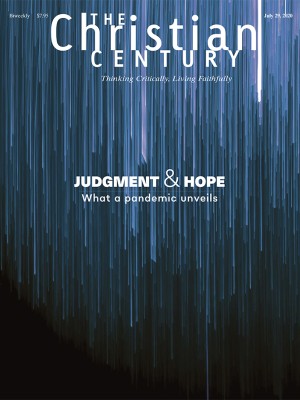Envisioning part-time clergy as a blessing rather than a sign of decline
Revitalizing lay leaders to bring congregations new life
If you have ever been a part-time pastor, you’ve likely heard someone tell you your job doesn’t exist. There is, the person says with a wry smile, no such thing as part-time ministry. This statement reflects the traditional wisdom about ministry: that it’s always a full-time job, regardless of what the contract may say.
G. Jeffrey MacDonald pushes hard against this narrative. His book invites readers to imagine part-time clergy not only as a viable model for a way forward but as a blessing that revitalizes congregations by energizing lay leaders. His perspective will be especially useful for churches in denominations that see part-time clergy as the first sign of a dying congregation.
Read our latest issue or browse back issues.
The increasing prevalence of part-time clergy is a secret that every mainline Protestant denomination is keeping, MacDonald writes. In many regions of the United States, most clergy are already working part-time—and the number of churches needing to hire someone at less than full-time is growing. There is no clear road map for part-time clergy to follow because most denominations don’t want to acknowledge that they exist.
MacDonald doesn’t just acknowledge the existence of the many parishes that do not have a full-time clergy person. He celebrates these congregations as places where there can be mutual thriving because of, rather than in spite of, the staffing circumstances. He encourages readers to view the part-time positions churches have to offer as a gift, a way of helping everyone to participate in keeping the community healthy. MacDonald uses a combination of case studies, data from denominations, and leadership theory to show that congregations who view their part-time staffing situation as a gift are more vibrant than those who view it as a liability.
Part-Time Is Plenty doesn’t claim that part-time ministry is the best model for every church. MacDonald acknowledges that many people are called to full-time ministry, and he honors the value of that role in circumstances where it works without draining people of energy or endowments of funds. The value of the book is that it uplifts part-time ministry as an equally valid calling, which may help those who are fixated on the loss of prior models to refocus, trusting God with what is happening right now.
MacDonald is a journalist as well as a pastor, and the reporting he brings to this project is impressive and unprecedented. He immersed himself in 20 thriving congregations that have successfully transitioned in recent years from full-time to part-time clergy. His sample covers a variety of mainline Protestant denominations and demographics, although most of the congregations in his study are predominantly white—a factor he attributes in part to the reality that many congregations in African American and new immigrant communities never had full-time clergy to begin with.
The book digs deeply into provocative questions. What does a congregation actually need from a clergy person? How might a church do more with less? Why would a congregation decide to move from a full-time to a part-time clergy position, and what would help it make that transition smoothly? When is the healthiest time to make this kind of decision? The beauty of the book is that it does not offer categorical answers. MacDonald sets forth good questions, offers stories that show how some thriving churches have answered those questions, and invites readers to imagine answers for their own contexts.
The end of the book is perhaps the most jarring. It discusses the realities of asking people to spend three years in graduate school and incur enormous debt in order to take on a part-time position. Here MacDonald lays bare the ways our current system of theological education fails to match the current reality. As congregations and clergy reinvent their vision of ministry, seminaries must also rethink what it means to be a place that equips ministry candidates.
This is where the book feels less hopeful. While it is easy to imagine clergy people and individual churches embracing the possibilities of part-time clergy, it is much harder to imagine large organizations like mainline denominations and their affiliated seminaries moving to a model that would give their clergy people more flexibility and more options. Expanding to include more viable options for part-time ministry requires institutions to give up some measure of power, and that never comes easily.
Still, it is much easier in the midst of COVID-19 to imagine all of this happening than it would have been a few months ago. Part-Time Is Plenty was published in early April. The changes that were on the horizon when MacDonald wrote the book are now right in front of us, making the shift much harder to ignore. Perhaps ecclesial institutions, churches, and clergy will now begin to imagine a new way forward where part-time really is plenty for all parties, rather than face death. I hope so, because this is the first book I’ve read in a long time that’s made me excited about the possibilities ministry has to offer me, the church, and the world.







